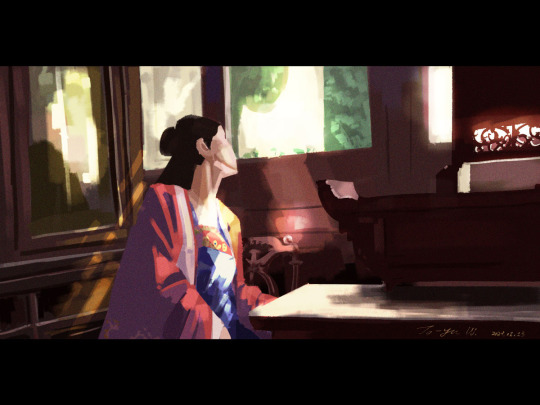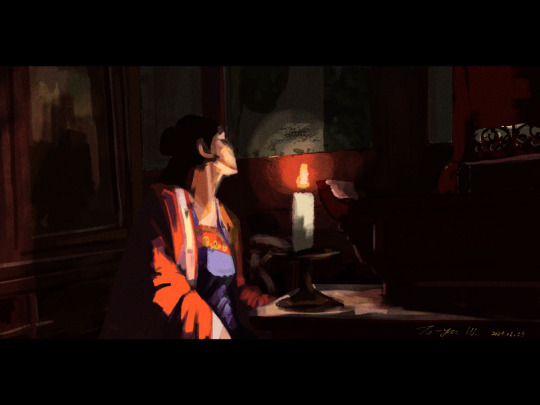#ancient Chinese
Explore tagged Tumblr posts
Text
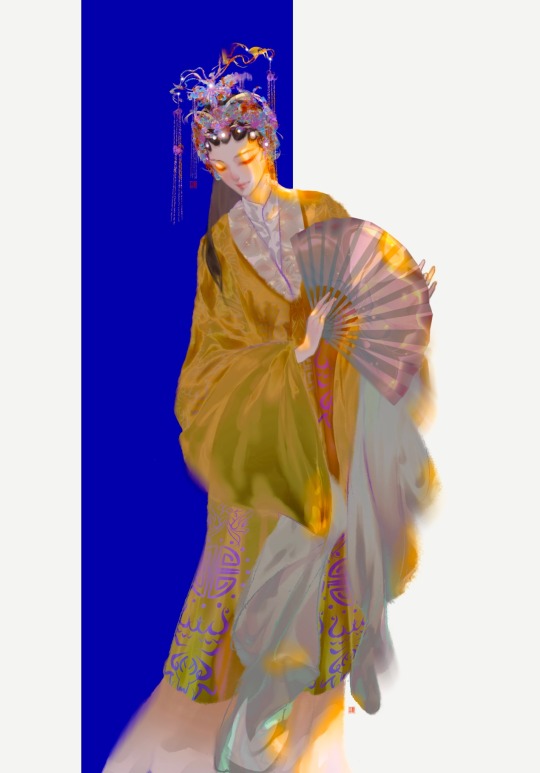
chinese opera 🪼
with a little creative liberty;;;
#art#aesthetic#brainrot#digitalill illustration#digital art#digital drawing#illustration#digital painting#hanfu fashion#hanfu#chinese hanfu#漢服#汉服#中國戲曲#戲曲#中国戏曲#戏曲#beauty#chinese fashion#ancient chinese#ancient china#古裝#古風#古风
191 notes
·
View notes
Text
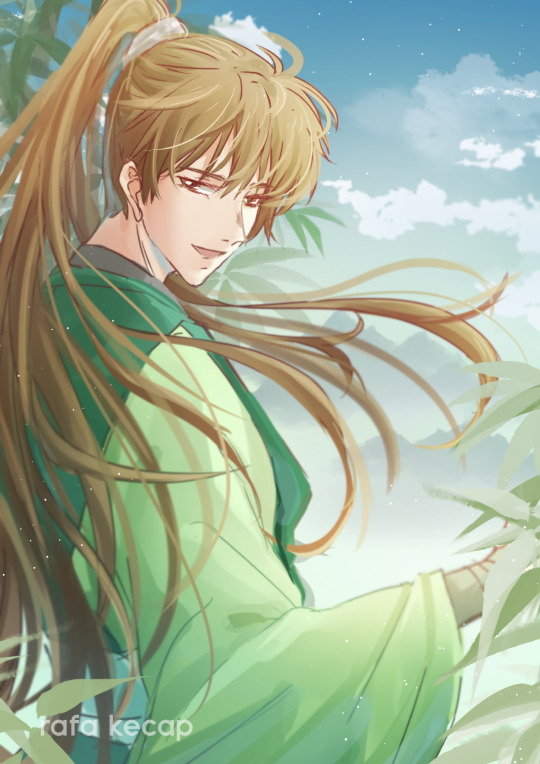
It a bit late 🥹
Happy Birthday Xiao San Ye 🎂💚💚💚✨
Wishing Iron Triangle always healthy and always together 💞
33 notes
·
View notes
Text

‘Faces of Sanxingdui’: Bronze Age Relics Shed Light on Mysterious Ancient Kingdom
A golden face with patinaed turquoise eyes stares out of the darkness. Illuminated around it stand three other bronze heads — some have flat tops, others round — all looked over by a giant bronze statue almost 9 feet high. All have the same piercing, angular eyes.
There’s something about the “Faces of Sanxingdui” — as this collection of sculptures is being billed — that feels both familiar and alien. Currently on display at the Hong Kong Palace Museum, they may appear Mayan or Aztec to the untrained eye, but these over-3,000-year-old sculptures weren’t unearthed anywhere near Mesoamerica’s ancient civilizations. They were discovered on China’s Chengdu Plain, at an archeological dig site called Sanxingdui (which translates as “three star mound”).
Thought to be the largest and oldest site left by the Shu kingdom, a civilization in southwestern China once only hinted at in myths and legends, Sanxingdui was not discovered until the 1920s, when a farmer stumbled across objects while digging an irrigation ditch. The site has since been found to contain the ruins of an ancient city made up of residences, sacrificial pits and tombs enclosed by high dirt walls. Archaeologists from the Sanxingdui Museum say the city was established some 4,800 to 2,800 years ago, until it was abandoned around 800 BC for unknown reasons.

The Chinese government has long promoted Sanxingdui as evidence of the country’s long, uninterrupted history — with the discoveries included in history textbooks for more than a decade. And while thousands of visitors have already flocked to the groundbreaking exhibition in Hong Kong, some analysts suggest that the items are also being used to support the Chinese government’s vision of national identity.
The mysterious and talented Shu
The Shu kingdom, which emerged in the Sichuan basin during the Bronze Age, is believed to have developed independently of the Yellow River Valley societies traditionally considered the cradle of Chinese civilization. Its inhabitants created exquisitely crafted bronze, jade, gold and ceramic objects, depicting fantastical beasts, kings, gods and shamans with bulging eyes and enlarged ears.
Around 120 of the items are currently on display in Hong Kong, and it’s the first time many of these objects, most of which were excavated between 2019 and 2022, have been showcased outside Sichuan province.

Remarkably, the sculptures predate the Terracotta Army, a collection of earthenware statues depicting the armies of China’s first emperor Qin Shi Huang, by at least 1,000 years. Wang Shengyu, an assistant curator at the Palace Museum said the objects are far more advanced, imaginative, and artistic than those being produced anywhere else in China at that time.
“You can tell that it’s very sculptural and very artsy,” Wang said at the exhibition opening, pointing to a roughly 1-foot-tall bronze figure whose fantastical, braided hair extends out to three times the height of its body and, had it not been broken, would stretch much further. “You can imagine how magnificent it was. From above his nose and all the way up, it would’ve been over 1.5 meters (4.9 feet) tall, according to the fragments (archeologists) found. The end of the pigtail is on his shoulder.”
Little is known about the Shu kingdom other than what’s been discovered on the 3.6-square-kilometer (1.4-square-mile) site outside Chengdu. There is no evidence of a written Shu language, and historical literature contains scant information about its culture other than a handful of myths and legends, including a reference to a Shu king called Can Cong whose eyes were said to have protruded — perhaps explaining why so many of the 13,000 relics recovered from the site feature bulging eyes.

After the Shu state was conquered by the Qin dynasty in 316 BC, Shu culture was “buried” under the “mainstream” culture that later emerged on China’s central plain, Chinese authorities wrote in a 2013 UNESCO submission seeking to have Sanxingdui and two nearby archeological sites recognized as World Heritage Sites. They are currently on UNESCO’s “tentative list.”
Since 1986, eight excavated pits at Sanxingdui have yielded giant masks of gods with bulbous, insect-like eyes and protruding ears, mythical creatures with gaping mouths and an almost 4-meter-tall (13-foot) bronze “tree of life” sculpture decorated with ornaments like a Christmas tree. All the items were found shattered, burned and buried, leading experts to believe the pits were used for ritual sacrifices. Some have now been painstakingly re-constructed by archaeologists. “It took 10 years to reconstruct the tree,” said Wang Shengyu, an assistant curator at the museum who helped curate the exhibition.
That tree is not on show in Hong Kong, as it is considered too precious to send abroad, but a section of one of six others discovered and ornaments are on display at the museum, as well as a 3D holographic projection of what experts think it would have looked like – its layers and branches adorned with birds, flowers, fruit, dragons, bells as well as jade and gold foil ornaments. The set are thought to have been part of a theater space.
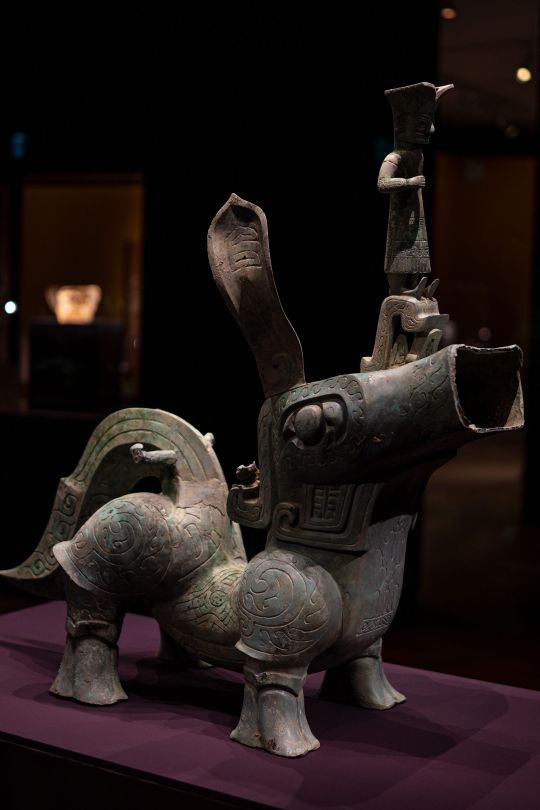
‘Historical myth’ of a continuous civilization
The exhibition places these items in the context of other ancient civilizations and includes the Shu among the many societies to have existed in the country’s “5,000-year history.” According to a press release from organizers, museum and Hong Kong government officials at the opening stressed the “continuity, inventiveness, unity, inclusiveness and emphasis on peace and harmony” of Chinese history.
Henry Tang, chairman of the governing body behind the West Kowloon Cultural District (where the Palace Museum is located) and a former candidate for Hong Kong’s top leadership role, said in a statement that the district and museum are looking to “promote cultural and artistic exchanges between China and the world, ‘tell China’s story well’, and strengthen the public’s cultural self-confidence.”
But the narrative that the Shu kingdom was innately Chinese is contentious, according to Ian Johnson, a senior fellow for China Studies at US think tank, the Council on Foreign Relations.
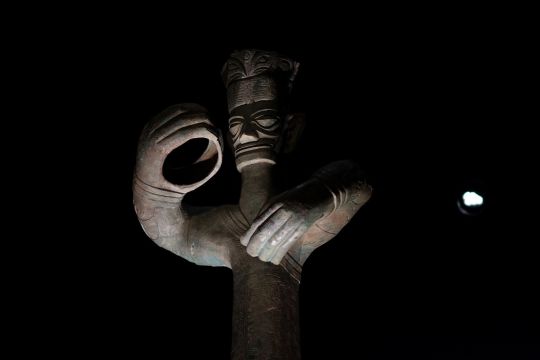
“Over the past few decades, the (Chinese Communist Party) has been trying to push a historical myth that all the peoples who have ever lived inside the current borders of the People’s Republic are ‘Chinese,’” he said over email.
“The basic idea is that the PRC (People’s Republic of China) encompasses people who naturally belong together and therefore, from today’s standpoint, form a nation. Hence any effort to have autonomy or even independence is taboo — it runs against history.”
The People’s Republic of China was established in 1949, and its government has often used China’s continuous history as evidence that ethnic groups such as the Tibetans and the Uyghurs have always belonged to China.
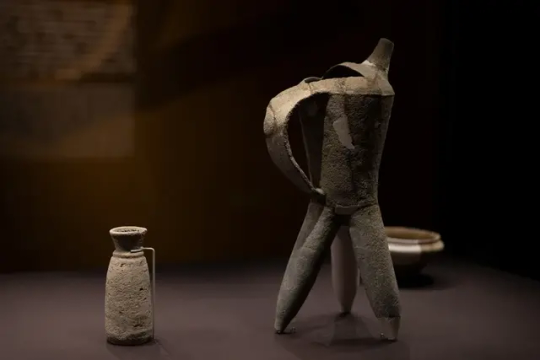
Johnson said that there was little support for the idea that civilizations along the Yellow River had much in common with those in the Sichuan Basin.
“They have commonalities but are not the same — just as ancient Assyrians and Phoenicians and Greeks weren’t the same, even if they shared certain things in common,” he said, adding: “sponsoring these kinds of exhibitions are popular and win the government credit.”
When asked to comment, the Hong Kong Palace Museum said the exhibition was “curated based on academic and archaeological research” and that it reinforces its mission to deepen audiences’ “understanding of the lives and cultures of various regions and ethnic groups as well as exchanges among them in ancient China, which have contributed to the magnificence of China’s civilization and its ‘diversity in unity’ pattern of development.”
By Christy Choi.
#‘Faces of Sanxingdui’: Bronze Age Relics Shed Light on Mysterious Ancient Kingdom#Chengdu Plain#Sanxingdui#Shu kingdom#gold artifacts#bronze artifacts#ancient artifacts#archeology#archeolgst#history#history news#ancient history#ancient culture#ancient civilizations#ancient china#ancient chinese#chinese history#chinese art#long post#long reads
33 notes
·
View notes
Text
here's a love letter in the form of a poem to all the obscure dead languages out there and the people who love them.
here's for dying languages!
the bloodstains between the letters,
the rips in their vocab lists,
never to be sutured up.
Here's for old languages!
never to be heard by a native speaker again.
#tagamemnon#ancient rome#langblr#breton#etruscan#hittite#uhh a lot more#ancient chinese#sanskrit#latin#ofc#ancient greek#old french#too many to name#akkadian#old norse#carolina Algonquian#etc etc etc#i just love them okay!!! they're like the weird old uncles of the language world who sit in the shadows and just watch and tell old stories
24 notes
·
View notes
Text
Yao — Chinese Folktales: Goose Mountain — The Cycle of Hidden Relationship

The animated film “Goose Mountain” is adapted from the classical Chinese prose “Yang Xian Shu Sheng” by Wu Jun, a poet of the Northern and Southern Dynasties. It is part of the Yao — Chinese Folktales series by Bilibili.
This episode features five characters:
👨🌾 A traveling merchant 🦊 A fox spirit 🐰 A rabbit spirit 🐷 A wild boar spirit 🦢 A goose spirit
The story revolves around a traveling merchant who encounters the one-legged fox spirit while on his way to deliver two geese to a village in the mountains. The fox spirit possesses the merchant and forces him to carry a bag containing the fox up to the peak of Goose Mountain.
Upon reaching the summit, the fox spirit invites the merchant to rest and share a drink as thanks for fulfilling their agreement. As the fox spirit becomes drunk and drowsy, it spits out a rabbit spirit. The rabbit spirit then spits out a wild boar spirit, and the wild boar spirit subsequently produces a beautiful goose spirit.
The merchant falls in love with the goose spirit, who pleads with him to help her escape. However, when the fox spirit begins to awaken, the wild boar spirit quickly swallows the goose spirit, followed by the rabbit spirit swallowing the wild boar spirit, and finally, the fox spirit swallowing the rabbit spirit.
Stunned by the events, the merchant can only watch as the fox spirit bows in thanks and hops away on one leg with a mysterious expression, leaving the merchant alone on Goose Mountain. He loses both the geese he was supposed to deliver and the goose spirit he had fallen for, forever.
You can watch the animation for free on the Made By Bilibili — Chinese Donghua Animation channel or via the YouTube link provided below.
youtube
Interpretation of the Animation Goose Mountain and Lessons Derived from It
Reflection on Power Dynamics in Relationships The story highlights the imbalance of power often present in relationships, where one party dominates or leads the other. In this animation, it reflects the patriarchal views of ancient Chinese society, where men typically held superiority in relationships. This is evident from the female animal spirits (the Rabbit Spirit and Swan Spirit) being subservient to the male spirits (the Fox Spirit and Wild Boar Spirit). Such inequality can lead to dissatisfaction, causing one party to seek solace or affection elsewhere, as a way to escape the distress of an imbalanced relationship.
Depiction of Toxic Relationships The animation portrays the traits of toxic relationships that many people face today. Conflicts in these relationships often escalate into verbal abuse or force, symbolized in the story by “being swallowed.” This act represents silencing or overpowering the other person, effectively ending disputes unilaterally. The imagery of being swallowed back into the stomach symbolizes entrapment, where one partner uses love as a tool to control the other, even if it leaves them unhappy.
Uncertainty of Love and Loyalty The animation reflects the human fear of not knowing whether their partner truly loves and remains loyal to them. It raises the question of whether someone harbors secret feelings for another while maintaining a relationship. This is metaphorically shown through the sequence of animal spirits swallowing one another. When the dominant partner is unaware or distracted, the other reveals their hidden love, only to conceal it again when the dominant partner notices.
The Peril of Involvement in Love Triangles The story warns against becoming entangled in love triangles. Each character is tied to another in a continuous chain. Had the merchant pursued the Swan Spirit, he might have become part of the cycle of overlapping affections. The moral here is that relationships should begin when both parties are free from hidden or unresolved ties.
The Human Tendency to Reveal Secrets The narrative reflects the human inclination to unburden themselves of secrets or guilt (in this case, infidelity or hidden relationships). People often choose to confide in strangers, believing that such confessions won’t come back to harm them. This tendency is symbolized by the spirits revealing themselves to the merchant, an outsider, rather than those they are bound to.
Reflecting the deceptions of swindlers which have existed from the past to the present, in line with the saying, *”Don’t trust the road; don’t trust people, or you’ll end up regretting it.”* This proverb aligns closely with the story’s theme. If the tale of consuming one another among demons isn’t about love, it might instead be a scheme to lure the traveling merchant into believing and falling into a trap, ultimately becoming prey to another fox demon.
Understanding of the Natural Cycle The animation demonstrates the ancient Chinese poet’s grasp of the natural cycle, represented by the food chain. While the sequence of spirits consuming one another may not adhere strictly to biological principles, it effectively illustrates the concept of energy transfer in nature.
A Chain Narrative Style The storytelling employs a chain narrative technique, common in folklore and ancient legends across cultures. This is akin to tales like the one about the old couple planting beans and sesame seeds, where each character’s actions ripple into subsequent events.

#chinese folktales#animation#hidden love#ancient chinese#goose mountain#movies#anime#art#film critics#nature#Youtube
2 notes
·
View notes
Text
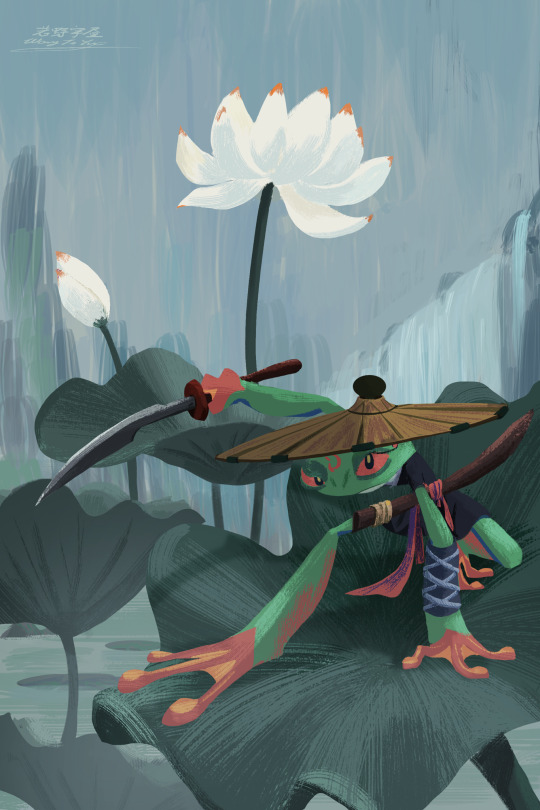
#art#drawing#illustration#artists on tumblr#digital painting#character design#character illustration#character art#frog assassin#wuxia#ancient chinese#wuxia hero#国风
6 notes
·
View notes
Text
The ancient Chinese actually figured out how to make nuclear bombs in 1000BCE, but they found the technology frivolous and stupid, and never used it
#facts i just thought up#ancient chinese#nuclear bombs#yes this is inspired by the fact that the romans figured out steam power and just used it for party tricks
2 notes
·
View notes
Text
Lexie Liu - 佳人 (Kappa Girl.)

youtube
"Kappa Girl"
Sadly, this is the "Zenith" (Ghost) of Asian music, (before of course 13 Commandments.) It was a collaboration with Kappa, apparently so isn't available on iTunes or Amazon music, though there is a live version (unsure if Lexie, though.) You can't find this song anywhere else, I need it!!!



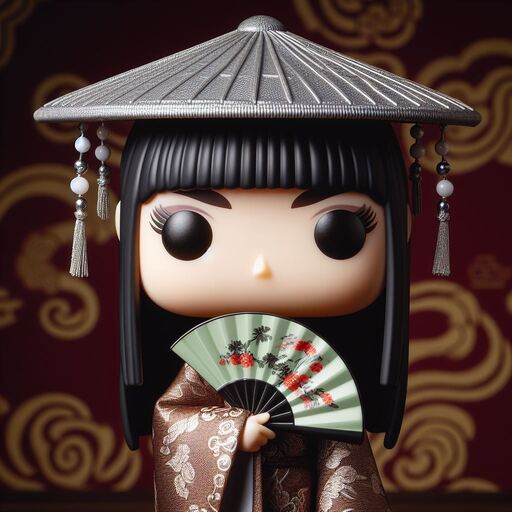
#Youtube#lexie liu#kappa#china#chinese music#addiction#addicting#girl power#female lead#girl boss#chinese rap#c-rap#chinese dance#ancient Chinese#traditional
3 notes
·
View notes
Text
[Classical Mandarin->English]
Lao Zi (Lao Tzu/老子) Quote from Chapter 64 of the Dao De Jing (Tao Te Ching/道德经/道德經) - Color Coded Translation
—
千里之行,始於足下
千里之行,始于足下
qiān lǐ zhī xíng,shǐ yú zú xià
The journey of 1000 (chinese) miles starts under your feet.
—
Please correct me if I made a mistake.
#color coded translation#chinese langblr#learn chinese#mandarin langblr#chinese lesson#chinese vocab#chinese to english#classical chinese#classical mandarin#tao te ching#dao de jing#daoism#taoism#taoist#daoist#lao tzu#lao zi#ancient Chinese#chinese proverb#chinese poetry#chinese poem
16 notes
·
View notes
Text
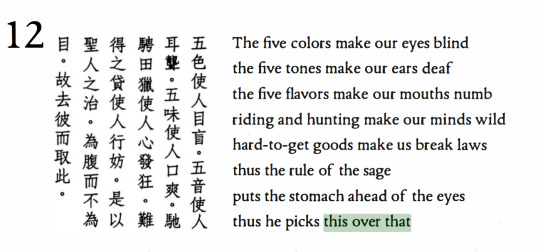
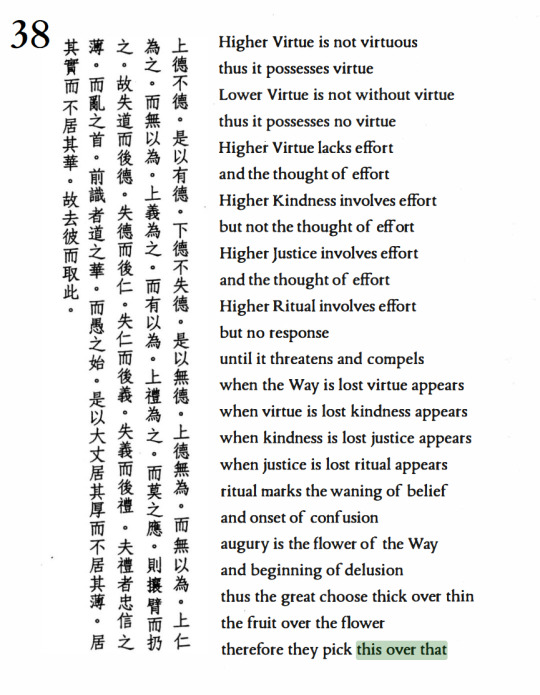

'ᴛʜɪꜱ ᴏᴠᴇʀ ᴛʜᴀᴛ' - ʟᴀᴏ ᴛᴢᴜ
#lao tzu#chinese#chinese philosophy#chinese proverbs#ancient chinese#ancient china#tao te ching#yinyang
11 notes
·
View notes
Video
tumblr
I visited the official website for Promise of Lingyun. The music was relaxing and the ladies were so charming that I had to share!
#Promise of Lingyun#ancient#ancient China#mobile game#ancient chinese#BGM#chinese BGM#pretty ladies#XD#so very pretty
5 notes
·
View notes
Text



THE ANCIENT TRAPPINGS AND WORLDLY ORNAMENTATIONS OF A HELLSPAWN.
PIC(S) INFO: Mega spotlight on Mandarin Spawn six inch action figure, a completely redecorated figure originally released in Spawn Series 14. It was re-released by McFarlane Toys as part of Spawn Reborn Series 2 in June 2004.
BRAND: SPAWN
GENRE: Comics
PRODUCT TYPE: Action Figure
SERIES: Spawn Reborn Series 2
SPECS:
PAINT: Repaint
FORMAT: Action Figure
SCALE: 6 Inches
PACKAGING: Clamshell
Sources: https://mcfarlane.com/toys/mandarin-spawn & Pinterest.
#Mandarin Spawn#Mandarin Spawn Reborn#East Asian Culture#Reborn#McFarlane Toys#Spawn Reborn Series 2 2004#Toys#Toycore#Hellspawn#SPAWN#SPAWN Reborn Series 2#Toy photography#Action figure photography#Spawn Reborn Series 2#SPAWN Toys#2004#Spawn Reborn#SPAWN Reborn#Image Comics#Action figures#Mandarin#Spawn Reborn 2004#Ancient Chinese Culture#Mandarin Warrior#Spawn Toys#East Asian#East Asia#Repaint#Spawn#Ancient Chinese
0 notes
Text
Enduring Legacy: Commemoration of Ancient Chinese Mathematical Master Liu Hui Marks His Timeless Influence on Mathematics and Civilization Exchanges
— By Huang Lanlan | September 25, 2024

A view of the exhibition Liu Hui, a leading founder of classical Chinese mathematical theories at Réfectoire des Cordeliers in Paris
A year-long global commemoration of Liu Hui, a prominent figure in ancient Chinese mathematics, kicked off in Paris on Tuesday local time.
Co-hosted by the China Association for Science and Technology (CAST), and the Chinese National Commission for UNESCO (The United Nations Educational, Scientific, and Cultural Organization), the commemoration celebrates Liu, whose works and theories not only have a profound impact on ancient Chinese mathematics, but also continue to provide a source of inspiration for scientific and technological progress and civilization exchanges in today's world.
In November 2023, UNESCO held the 42nd session of the General Conference and approved the proposal made by the CAST to celebrate the anniversary of Liu's birth. It was the first time China had successfully applied for a birthday anniversary event for a scientist at UNESCO, said the CAST.
"We hope that through such events, we can showcase to a global audience the remarkable scientific achievements, exceptional ideas, and significant contributions to human civilization made by ancient Chinese scholars like Liu Hui," said He Junke, executive president of the CAST, in a speech he delivered at the launch ceremony of the commemoration on Tuesday local time, at the headquarters of UNESCO in Paris.
An Ancient Chinese Mathematical Master

Some visitors explore the exhibition Liu Hui, a leading founder of classical Chinese mathematical theories at Réfectoire des Cordeliers in Paris on September 24, 2024.
Liu, who lived in the 3rd century, was one of the founders of classical Chinese mathematical theory.
Liu had a profound influence on ancient Chinese mathematics and a direct influence on mathematics in the whole East Asia region, and he also indirectly influenced other regions in the world, said Zou Dahai, a research fellow at the Institute for History of Natural Sciences, Chinese Academy of Sciences (CAS).
Liu's commentary in China's mathematical classic Nine Chapters on the Mathematical Art inspired numerous mathematicians and mathematical works in later generations.

Liu Hui Photo: Courtesy of China Association for Science and Technology
"Emerging during the mid-1st century BC and having been passed down to present day, Nine Chapters on the Mathematical Art contains numerous universal algorithms and corresponding mathematical problems," Zou, who attended the Tuesday commemoration events online as an expert representative, told the Global Times. "The book has extremely rich content, featuring many significant academic achievements. But it doesn't provide explanations of how the algorithms and formulas were derived."
Liu's commentary was then an essential complement to the book, giving a comprehensive demonstration of mathematical methods in it. "Also, he made original and significant achievements in various areas, such as the theory of lü (ratio), the method of infinite division, volume theory, indirect surveying, the ratio of circumference to diameter, and decimals," Zou said.
Mathematics plays a crucial role in the modern scientific framework, He said at the launch ceremony on Tuesday. In ancient China, mathematics was one of the most advanced disciplines, deeply embedded in everyday life, he said.
"The mathematical system outlined in 'The Nine Chapters' serves as a bridge connecting abstract mathematical theories with practical applications," noted He. "From land measurement to urban planning, from building houses to constructing levees, it not only introduces precise calculation methods but also provides rigorous mathematical proof."

A Light of Wisdom Spanning Two Millennia
Weeks ago, the International Astronomical Union Minor Planet Naming Committee officially named an asteroid discovered in China the "Liu Hui Star," paying tribute to this precious cultural heritage of all humanity, He mentioned at the launch ceremony of the commemoration.
Many Chinese and international scholars invited to the commemoration told the Global Times that Liu's thoughts and his contributions to mathematics not only have great historical value, but also a profound enlightenment in contemporary mathematical learning, scientific research, and youth science education.
"The achievements, thoughts, and methods of ancient Chinese mathematics have long been integrated into the mathematics that we study today, and Liu's contributions are also part of this integration, having both tangible and intangible effects on the development of Chinese mathematics," Zou said. He explained that many kinds of knowledge of proportions that (modern Chinese people) learn, including the idea of viewing fractions as the ratio of two numbers, were actually influenced by Liu.
"Apart from Liu's specific mathematical achievements, his scholarly attitude and scientific spirit are worth our study and promotion," added Zou.
Jeff Chen, a professor of mathematics at US St. Cloud State University who attended the commemoration in Paris on Tuesday, emphasized how Liu's work can inspire and benefit the science education of today's youth.
"Liu's works clearly demonstrated that he had a curious and logical mind," Chen told the Global Times via email. "Although the mathematical knowledge in the Nine Chapters on the Mathematical Art may be considered elementary or even rudimentary, Liu's thinking and modes of reasoning are definitely not. They help us to make sense of the knowledge and lead us to utilize the tools at our disposal, applying them in ways beyond the conventions."
"In short, Liu's works really train students to think for themselves - the ultimate goal of education," Chen noted.

A poster for the celebration of 1800th anniversary of the birth of Liu Hui on September 24, 2024 Photo: Courtesy of CAST
A Bridge Connecting Eastern and Western Civilizations
Following the launch ceremony, an international symposium on Liu's academic thought was also held at the headquarters of UNESCO on Tuesday afternoon, where global experts in the history of science and technology, and the history of mathematics, made multi-dimensional interpretations and held discussions on Liu's academic contributions and scientific heritage, as well as their modern value.
Furthermore, they delved into the global dissemination of Liu's mathematical ideas, and proposed suggestions to further promote China's classical mathematical heritage.
Earlier, as another highlight of this series of commemorative events, a themed exhibition featuring Liu's achievements in mathematics kicked off at the Réfectoire des Cordeliers in Paris on Monday, so as to showcase Liu's mathematical achievement, and to deepen the civilization exchanges and mutual understanding between China and the world, read the exhibition's foreword.
Zhou Xiaohan, an associate research fellow at the Institute for History of Natural Sciences, CAS, believes that the exhibition is an opportunity to show Liu's important contributions, as well as the efforts made by Chinese and foreign scholars to study ancient scientific thought in China and their in-depth cooperation over the last century.

UNESCO, in collaboration with Chinese National Commission for UNESCO and the China Association for Science and Technology (CAST) ,commemorates the 1800th birth anniversary of renowned Chinese mathematician Liu Hui at its Paris headquarters. Photo by Mohammad Arif Ullah/For chinadaily.com.cn
"Liu's achievements are not only a treasure to China, but also a great legacy of human thought for the world," he told the Global Times.
"I wish there were exhibitions and presentations [in commemoration of Liu] in more major cities around the world," said Chen. "With the backing of UNESCO, such occasions will encourage more international interest in his works and attract students into the field of the history of mathematics in China. It will promote dialogue, discussions, and cultural exchanges between China and the rest of the world."
One of the themes of our time is exchange and mutual learning among different civilizations, Zou said in a speech he delivered at the launch ceremony. "Indeed, our commemoration of Liu Hui today, as well as the academic achievements supporting these activities are exactly the product of civilizational exchanges and mutual learning," he said.
The commemoration event in honor of Liu further conveys China's outstanding scientific achievements and scientific culture to the international community, which showcases both the characteristics and the universality of Chinese mathematics, Zou told the Global Times on Monday, ahead of the ceremony.
"This is a model case showing the diversity and accommodation of Eastern and Western cultures," Zou said.
#World 🌎#Europe#UNESCO#Chinese National Commission For UNESCO#China Association for Science and Technology (CAST)#Enduring Legacy#China 🇨🇳#Ancient Chinese#Mathematical Master Liu Hui#Timeless Influence#Mathematics | Civilization Exchanges#Global Times
1 note
·
View note
Text
•CCTV's New Year Intangible Cultural Heritage Night
•The poetic mist about Jiangnan Water Town
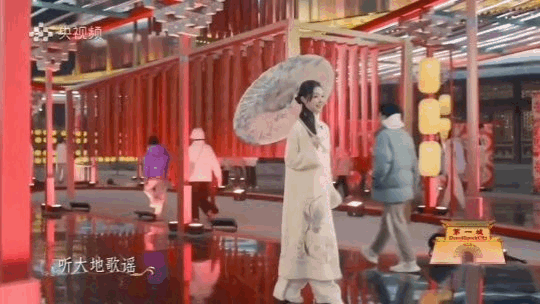
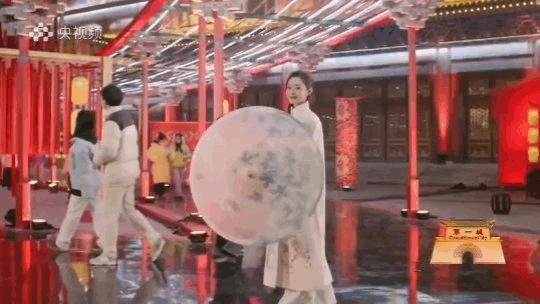



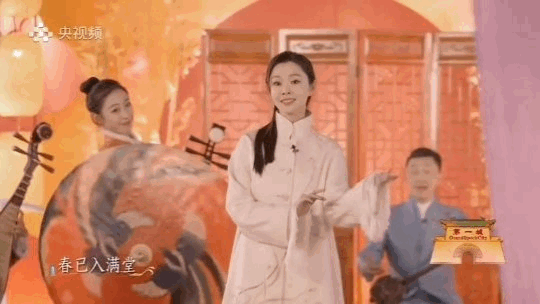
0 notes
Video
youtube
Ancient Chinese Inventions (Top 5 Inventions From the 9th Century to the...
0 notes
